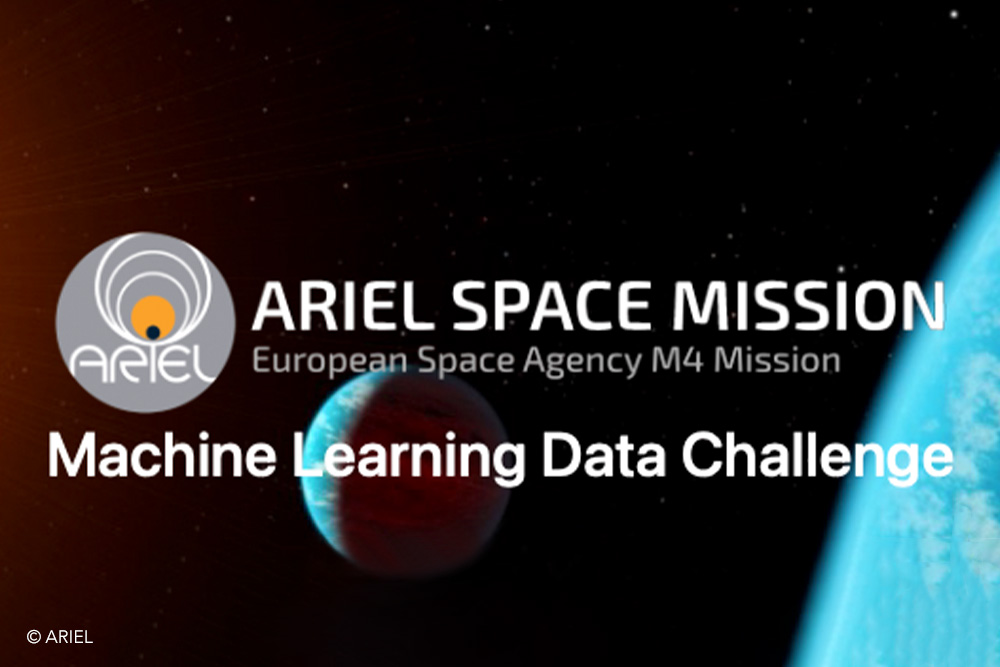ML2R and Partner among the Winners of the Ariel Machine Learning Data Challenge
August 10,2021
Scientists Lukas Heppe (ML2R) and Mirko Bunse (Collaborative Research Center SFB 876) took second place in the Ariel Machine Learning Data Challenge at the ECML PKDD 2021 conference. During the competition, the researchers developed a Deep Learning approach that allows for accurate predictions of the radii of extrasolar planets. In the application field of astrophysics, ML2R is dedicated to the machine analysis and processing of large astrophysical data sets.
Starting in 2028, the Ariel space mission of the European Space Agency (ESA) will observe the atmospheres of 1000 extrasolar planets (exoplanets). Exoplanets orbit stars outside of our solar system hundreds of light years away. As part of the Ariel Machine Learning Data Challenge at the ECML PKDD conference, participants used Machine Learning (ML) techniques to examine light curve data from “transiting exoplanets”. These planets pass in front of their host star in our line of sight.
Deep Learning Approach for the Analysis of noisy Space Data
When exoplanets pass in front of their host star, one observes a dip in the amount of light over time (light curve). The extent of this dip allows for conclusions about the radius and atmosphere of these planets. However, the surface properties of the star and signal distortions of the measuring instruments also cause fluctuations in the measured data. This “noise” complicates the analysis of the underlying data.
Together, scientists Lukas Heppe (ML2R) and Mirko Bunse (SFB 876) developed a multi-level Deep Learning method for analyzing the noisy time series data as part of the Ariel Machine Learning Data Challenge. Using data preprocessing, they bundled information from the data set, including noise properties. This bundling of information allowed for a training of neural networks that is efficient enough to create an ensemble of 45 individual networks. With an average prediction error of only three percent, the developed approach achieved second place in the challenge.
ML2R Application Field of Astrophysics
In the application field of astrophysics, ML2R scientists study Machine Learning methods that are interpretable and take background knowledge into account in order to process and analyze astrophysical data in real time. For this purpose, they use large, non-personal data sets and test ML methods in concrete application scenarios. Learn more about our strategic application areas: Technology Transfer
Contact:
Ann-Kathrin Oster
TU Dortmund University


